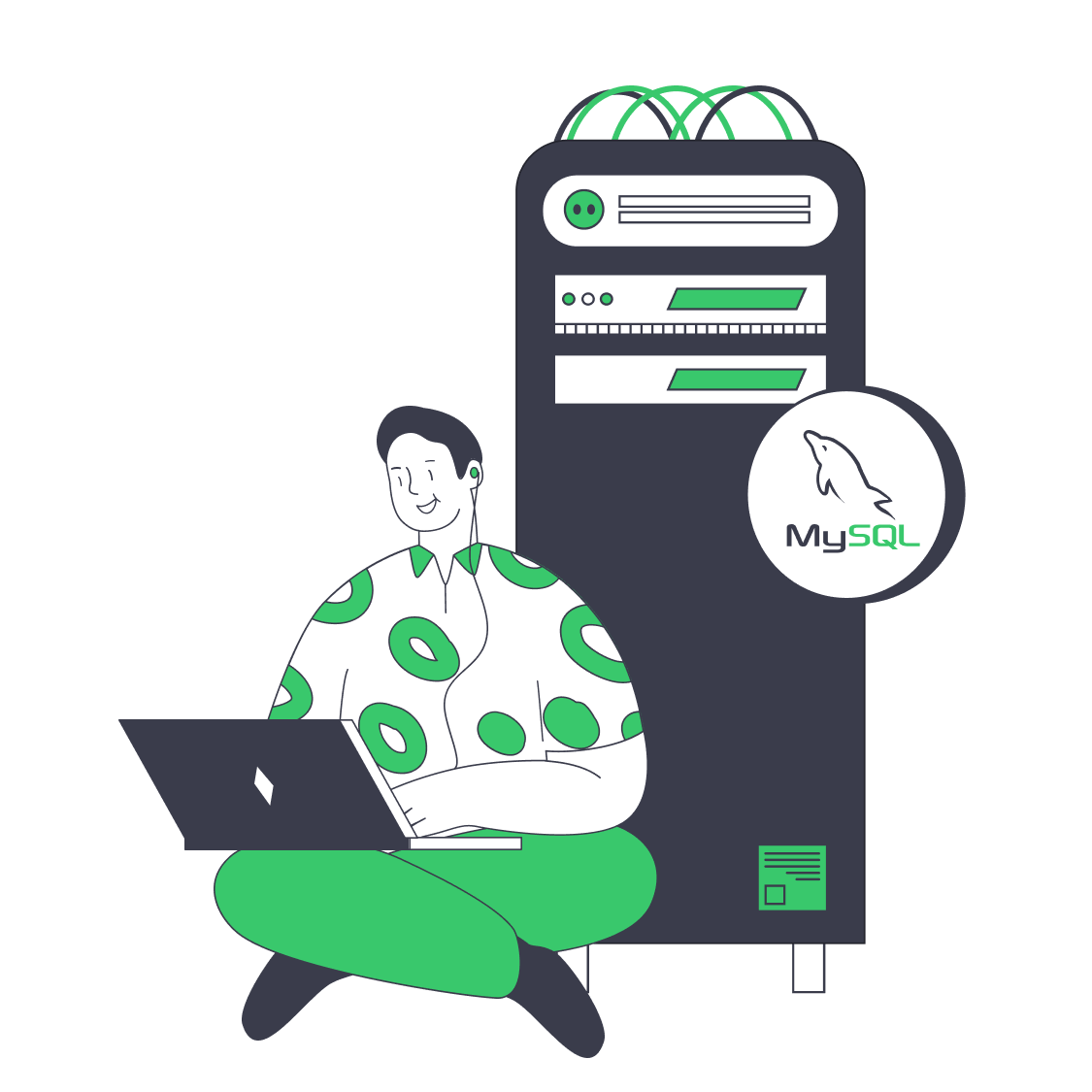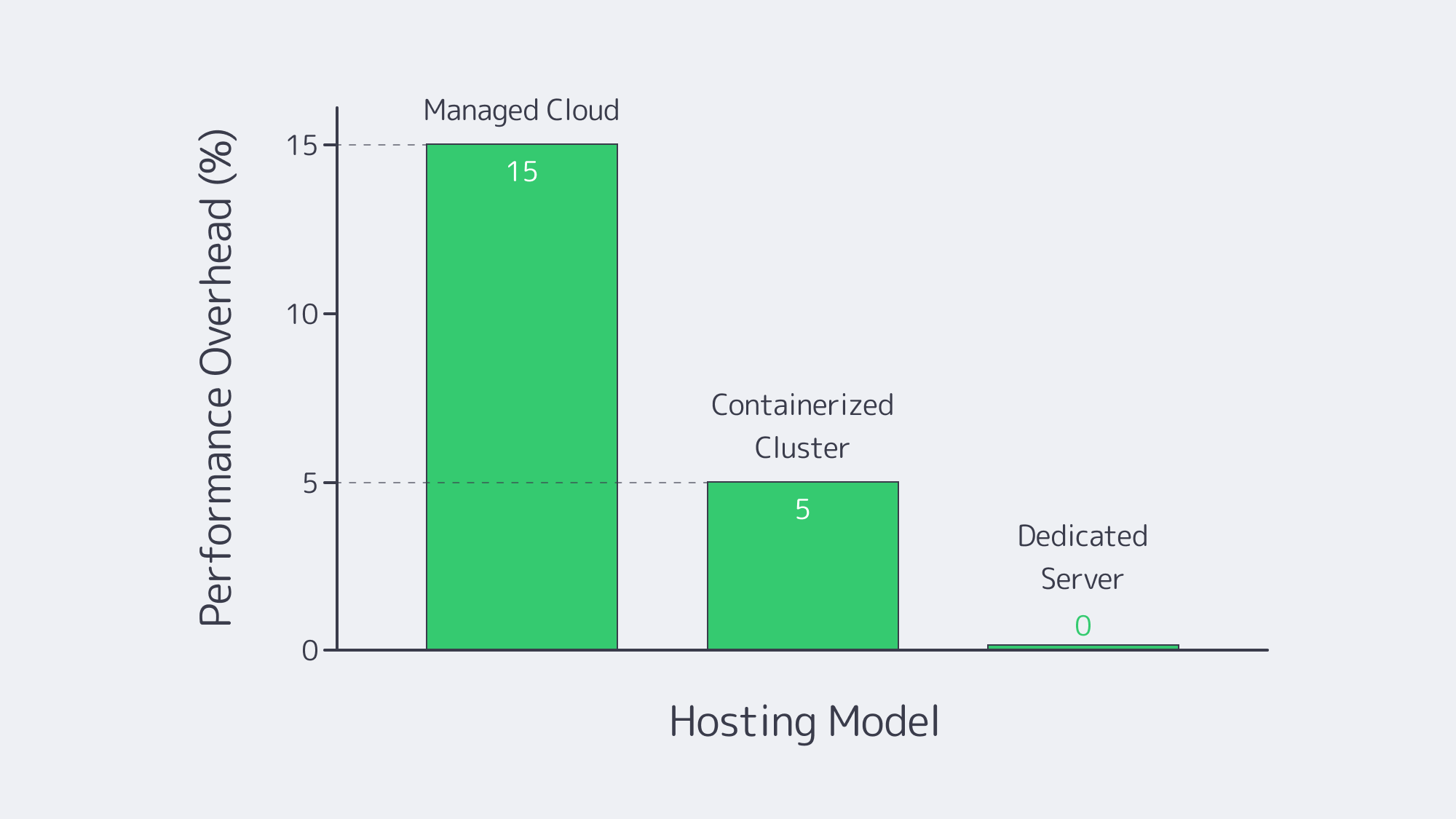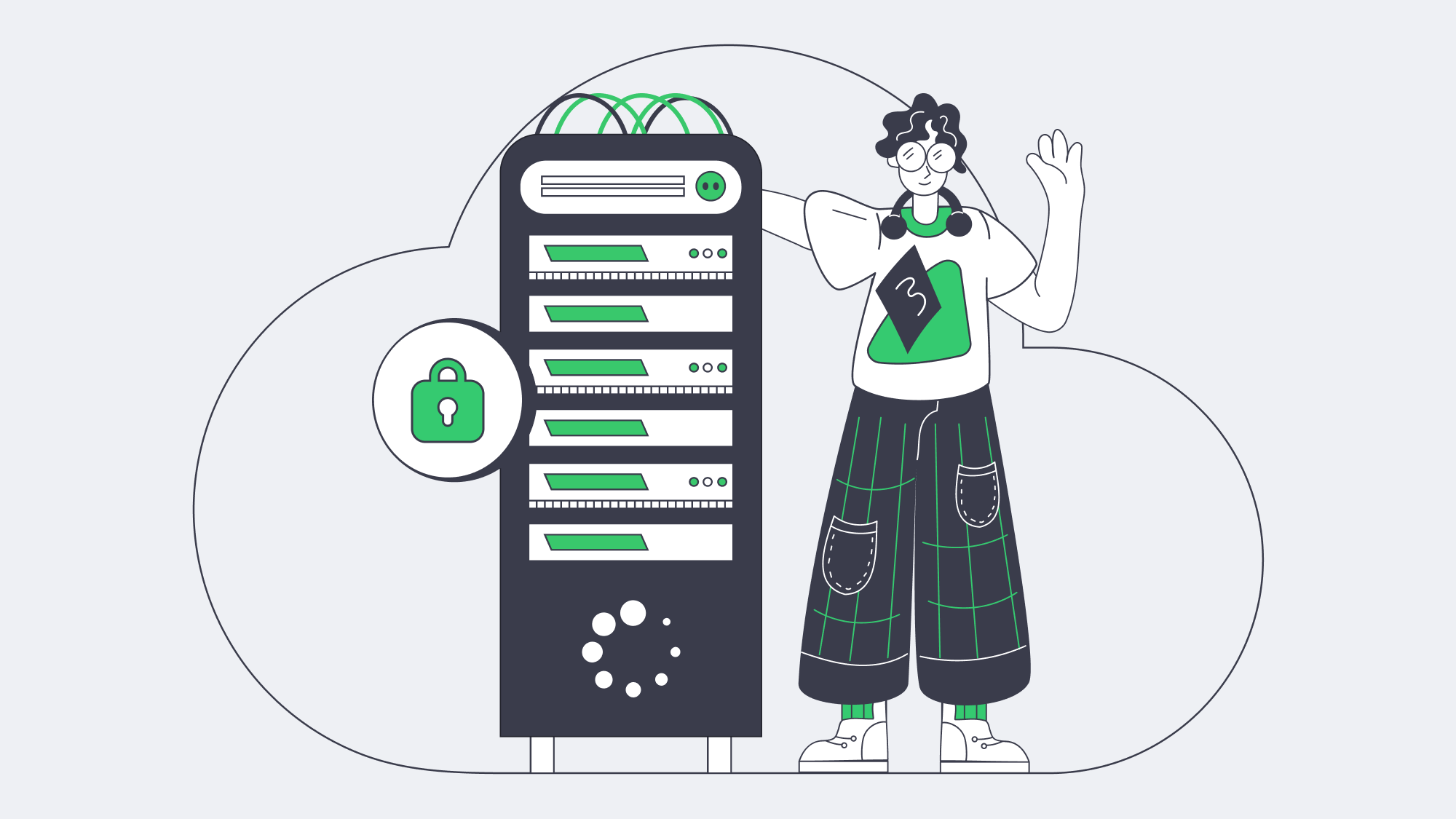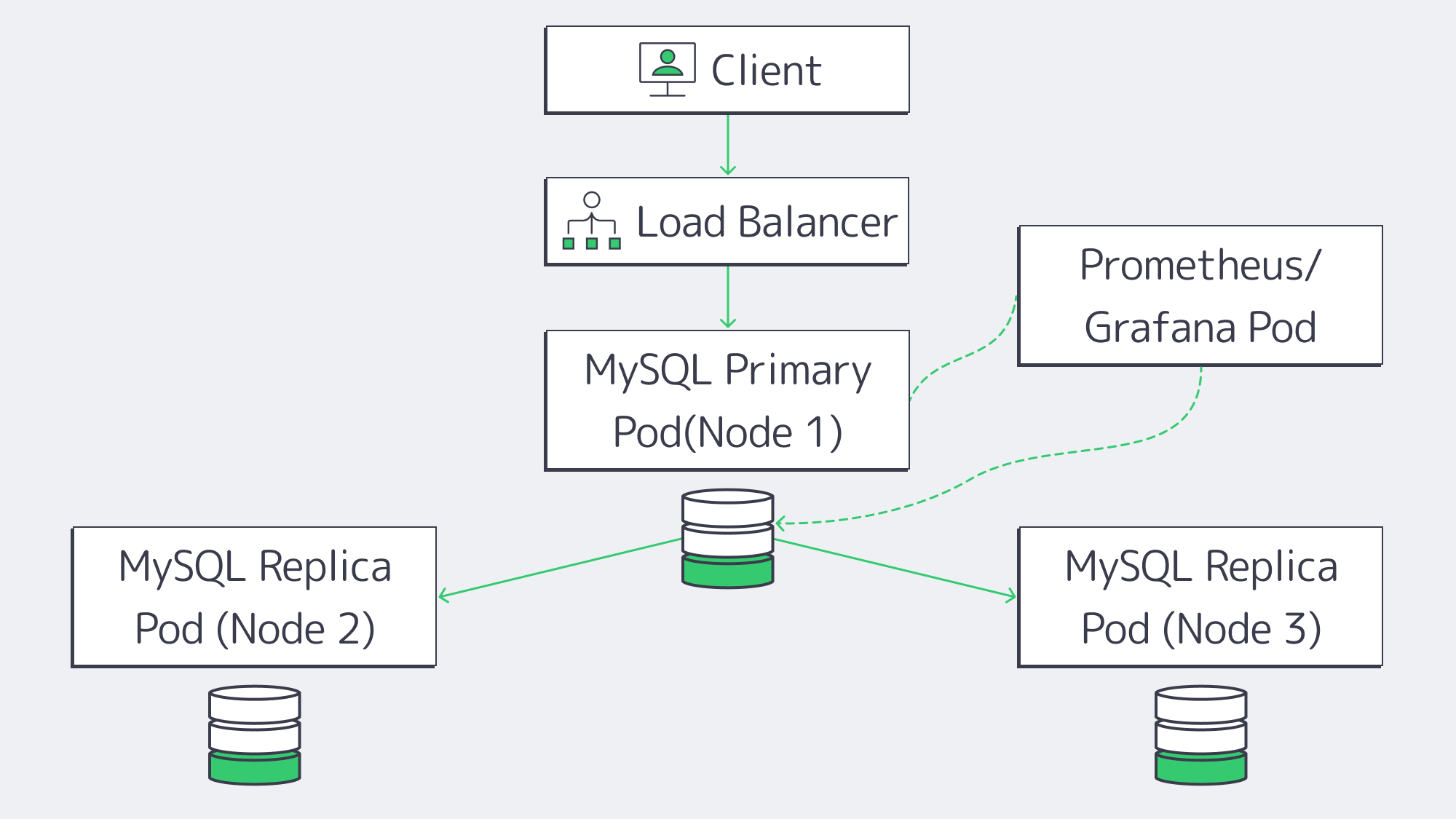Blog

Finding the Right Fit: MySQL Database Hosting Service
The majority of the world’s busiest applications rely on the relational database powers of MySQL. While it has many merits that have earned it its global popularity, hosting and scaling it effectively is no easy feat, and the heavier the load, the harder the task.
Your basic single-instance setups that use a solitary machine running one are pretty outdated for modern needs. These setups lack failover, and scaling them horizontally is limited. Moreover, the downtime can be catastrophic should the lone server fail.
Choose Melbicom— 1,000+ ready-to-go servers — 20 global Tier IV & III data centers — 50+ PoP CDN across 6 continents |
 |
A flexible, distributed architecture that can deliver speed is required to cope with the demands of high-traffic workloads.
So let’s discuss and compare the respective advantages and disadvantages of the three leading infrastructure models for a MySQL database hosting service: managed cloud, containerized clusters, and dedicated servers. By focusing on performance, scaling replicas, automated failover, observability, and cost as key aspects, the strengths and drawbacks of each soon become clear.
What Are the Key Requirements for a MySQL Database Hosting Service?

Performance
Low latency and sustained throughput are needed for adequate performance during peak loads in high-traffic environments, and the performance boils down to the infrastructure in place. When compared against physical hardware, virtualized MySQL implementation typically has a 5–15% overhead, which grows concurrently. Dedicated servers, on the other hand, eliminate the use of virtualization layers, granting access to all CPU and I/O resources. Although they perform well, containerized clusters such as Kubernetes throw extra variables in the mix to consider. They require more in terms of platform setup, such as storage drivers and network overlay.
Scaling Replicas
MySQL deployments use read replicas to deal with large query volumes. This replication is simplified by cloud providers through the use of point-and-click. Similarly, container-based clusters can be scaled using Kubernetes operators. However, multi-primary, large shard counts, and other specific topologies typically require some manual work. For real freedom, dedicated infrastructure offers the best scaling because you can just deploy more physical nodes as needed. This means there is no imposed hard limit on replica counts, and advanced replication patterns are no trouble.
Automated Failover
Downtime can result in less than favorable UX and ultimately means a loss in revenue, making failover extremely important. The architecture behind modern managed cloud MySQL deployments, such as Amazon RDS or Google Cloud SQL, can switch to standby instances automatically. This is typically completed within 60–120 seconds of downtime. Container platforms like Percona, Oracle MySQL Operator leverage orchestrators or specialized MySQL operators to detect node failures and promote replicas. However, the Orchestrator or MySQL Group Replication tackles failovers in seconds when hosted via a dedicated server solution, so long as redundancy and monitoring are in place.
Observability
Sophisticated monitoring is needed to successfully run MySQL at scale. It is important to observe CPU, RAM, and disk server metrics as well as query insights such as latency, locks, and replication lag. Often, dashboards are provided by managed services, but they often only display common metrics for those with low-level access. Container-based setups provide granular data through robust stacks like Prometheus or Grafana, but if your in-house expertise isn´t up to scratch may be tricky to maintain. With a dedicated server, you have total control over the OS, which means you can install any monitoring system, such as Percona’s PMM, ELK stacks, or custom scripts for a detailed overview.
Cost Modelling
As with any business decision, cost is often a major deciding factor. Opting for a managed service means less work in terms of maintenance and requires little to no knowledge, but you can expect premium rates for CPU, memory, and I/O, plus bandwidth and storage fees. While it can be beneficial for smaller workloads, for anyone sustaining high traffic, the costs are going to rack up quickly. Surveys in recent years have uncovered that almost half of the cloud users’ costs have been far higher than initially expected. These overheads can be potentially reduced for operations sharing resources across multiple apps if you opt for container-based MySQL, but only if they run on existing Kubernetes clusters. The underlying nodes still require outlay, and you have many other components at play that all incur costs of their own. To avoid unexpected charges, a dedicated server with a predictable monthly or yearly rate can prevent nasty surprises. Renting or owning hardware works out the most economical in the long run at scale; there are no cloud markups or data egress fees to contend with.
What Is Managed Cloud MySQL Hosting and When Should You Use It?

Choosing a managed cloud service (also referred to as DBaaS) to host MySQL databases can simplify the process significantly. These platforms handle OS patching, backups, software updates, and have basic failover automation in place.
So if you don´t have extensive DBA or are lacking DevOps resources, then a managed cloud service on such as platforms like Amazon RDS or Google Cloud SQL, can be a lifesaver. A simple API call adds replicas with ease, and you can enable high availability by just checking a box.
Managed Cloud Performance: Regardless of how powerful the hardware it must be noted that these services share a virtualized environment and many vendors have parameter limits in place. You may also find that specialized configurations are not permitted. In benchmark testing, raw overhead has been shown to degrade throughput by up to 15% where workloads are demanding.
Scaling Replicas: While creating multiple read replicas is allowed, multiple primary replicas and custom topologies might not officially be supported. So, depending on how heavy your read-only workload is, managed clouds may or may not be right for you. Amazon RDS supports up to 15 for MySQL, which could well be sufficient for some.
Automated Failover: The biggest advantage that managed cloud options have to offer is a swift automated failover. Standby replicas in different zones maintain synchronicity, taking roughly a minute or two, meeting the majority of SLAs.
Observability: The dashboards offered by the top managed cloud solutions might not give O-level access, but they do provide basic metrics and are easy to track. Deep kernels and file system tweaks are unavailable, but users still get access to slow query logs.
Cost: Most of these platforms operate in a pay-as-you-go manner, which is attractive to new users and convenient, but costs can soon mount. Add to that storage IO, data transfer, and backup retention, and like the majority of organizations leveraging these services, you could be in for a shock. Those with consistently heavy traffic will ultimately find that renting a physical machine saves them money collectively in the long run.
What Are the Trade-Offs of Hosting MySQL in Containerized Clusters?

Containerized clusters are considered a good middle ground option, and for those already operating with other microservices, it can be the most sensible solution. Orchestration platforms like Kubernetes can help automate replicas and backups, helping considerably with MySQL management.
Containerized Performance: The typical overhead with container operation is often less than full VMs, but you have to consider that if Kubernetes itself sits on virtual nodes, then abstraction comes into the picture, adding complexity to the performance situation. As does the network itself and any storage plugins.
Scaling Replicas: With a MySQL operator, you can handle replication set-up and orchestrate failovers. They can spin up and remove rapidly, but large multi-primary or geo-distributed clusters need customizing, which could be out of your wheelhouse.
Automated Failover: Failed pods are quickly identified and restarted, and a replica can be converted to primary automatically, but fine-tune readiness checks are needed to make sure everything is in sync, which can harm reliability. Without the right checks in place, split-brain scenarios are possible.
Observability: Logging stacks and granular monitoring tools such as Prometheus or Grafana can be easily integrated with Kubernetes, giving plenty of metrics. However, the node networks must be monitored in addition to keep track of cluster health properly.
Cost: Those with Kubernetes in place for other operations will find they can cost-effectively piggyback MySQL onto an existing cluster, so long as resources are available. If you are starting totally from scratch and just want Kubernetes to cover your MySQL needs and nothing else, then, in all honesty, it is probably overkill. The infrastructure outlay will set you back, and managing the cluster adds further complexity.
Why Choose Dedicated Servers for MySQL Database Hosting?
If you have high-traffic needs and require control, then the raw power on offer from a dedicated server often makes it the best MySQL database hosting service choice. Through Melbicom, you can rent physical servers housed in our Tier III or Tier IV data centers situated worldwide. This gives you unrestricted access to single-tenant hardware without hypervisor overhead.
Dedicated Server Performance: As there is no virtualization, users get full CPU, memory, and disk I/O. When compared directly with cloud VMs benchmarks, dedicated server solutions demonstrate performance gains of around 20–30%. Query latency for I/O-heavy workloads is also dramatically reduced when local NVMe drives are hosted on dedicated machines.
Scaling Replicas: Read replicas are unlimited, and advanced MySQL features such as Group Replication, multi-primary setups, or custom sharding are unrestricted depending on how many servers are deployed.
Automated Failover: With open-source tools like Orchestrator, MHA, or Group Replication, you can configure your failover however you choose. With the right configuration, failover matches any cloud platform, and multi-datacenter replication is globally available.
Observability: With dedicated server hosting, you have full OS-level access, meaning you can use any stack, be it Percona PMM or ELK, etc. This allows you to monitor a better variety of aspects, such as kernel tuning, file system tweaks, and direct hardware metrics.
Cost: Dedicated infrastructure has an initial outlay, but it remains predictable; there are no nasty surprises, regardless of any unexpected spikes. Those with a substantial workload will find that the total is generally far lower than equivalent cloud bills. Melbicom offers large bandwidth bundles with generous allowances up to 200 Gbps per server. We also provide 24/7 support as standard with any of our plans.
Trade-Offs: The only real caveat is that OS patches, security, backups, and capacity planning need to be handled on your end, but most find it an acceptable overhead considering the performance, control, and TCO predictability benefits that a dedicated server presents.
MySQL Hosting Models Compared: Cloud vs. Containers vs. Dedicated
Take a look at the following table for a concise comparative overview of each model:
| Model Type | Advantages | Disadvantages |
|---|---|---|
| Managed Cloud | – Simple startup- Integrated HA & backups | – Virtualization overhead- Limited configurations available- Costs can mount |
| Containerized (K8s) | – Portable across clouds- Automated with operators- Good union if you use K8s already | – Requires previous expertise- Storage/network complexities- Fluctuating overhead |
| Dedicated Servers | – Unbeatable raw performance- Full control, no hypervisor- Costs are predictable | – In-house management needed- Can’t be scaled instantly- Requires hands-on setup |
How to Choose the Best MySQL Database Hosting Service

Ultimately, to choose the best MySQL database hosting for your needs, you need to consider your workload, budget, and in-house expertise. Each of the top three models has benefits and drawbacks. A managed cloud might be convenient, but it can be costly to scale. If teams are already invested, then containerization provides sufficient automation, but may not handle complex needs. For reliable performance, a dedicated server is a powerful, dependable, cost-effective solution that won´t let you down.
When it comes to high-traffic applications that hit resource ceilings or cost ceilings, the blend of speed, control, and predictable expenses that a dedicated server solution brings to the table is unbeatable. With a dedicated server running MySQL, organizations can avoid premium charges and cloud lock-ins resiliently with the right failover configurations in place for truly dependable, scalable, managed services.
Ready for Faster MySQL Hosting?
Deploy your MySQL on high-performance dedicated servers with predictable pricing.